Floral photoshoots are a beautiful way to capture the essence of nature and incorporate it into stunning visuals. Whether you are a professional photographer looking for inspiration or someone planning a personal photoshoot, this article will provide you with a curated list of top floral photoshoot ideas. From dreamy meadows to vibrant gardens, these ideas will help you create memorable and enchanting images.
Who doesn’t love flowers? Such vivid colors, brighten up any scene and make a fantastic gift for friends of family members. The floral photoshoot is such a gratifying genre that some people shoot flower photography throughout the year. I indeed belong to that group of photographers. Bright colors, a beautiful overall look, and so much joy you can get. What is not to like about a flower photo session? However, before you jump headfirst into this genre, I want to share some of my experiences and tips on flower photography. I sincerely hope you can use these floral photo shoot ideas in your next sojourn.
You may enjoy reading Photography Ideas
Classic Elegance: A Garden Affair
Heading to a lush garden with neatly arranged flower beds can create a classic and elegant photoshoot. Choose a variety of blooms such as roses, lilies, and peonies to add sophistication and grace to the images. Experiment with different angles, close-ups, and wide shots to capture the beauty of the surroundings.
Breathtaking Bouquets: Focal Point Floral Art
Finally, focus on the art of floral arrangements by capturing breathtaking bouquets as the main subject. Showcase the intricate details, color gradients, and textures of carefully arranged flowers. Experiment with lighting techniques and compositions to transform a bouquet into a stunning work of art.
Use a tripod
It is a good idea to take a tripod along with you. It will be your most important decision to improve your flower photography. Make sure the tripod can carry the weight of your camera and lens and does not wobble around in a light breeze. Make sure to turn off the lens’ image stabilization and the cameras in body image stabilization. Body and lens-based image stabilization will otherwise look to stabilize any non-existent camera movement and continue to ‘stabilize’ in what is known as an endless loop of feedback.
Floral Fashionista: Flowers as Accessories
Explore the world of floral fashion by incorporating flowers as accessories. Create stunning floral crowns, necklaces, or bracelets using fresh or dried flowers. Combine them with stylish outfits and let the flowers become an integral part of the model’s style and expression.
Whimsical Wildflowers: Dancing with Color
Venture into a meadow adorned with wildflowers for a whimsical and colorful photoshoot. Let the vibrant hues of daisies, sunflowers, and poppies serve as the backdrop for playful and carefree shots. Embrace natural light and let the wind gently sway the flowers, adding movement and a touch of magic to the images.
You may enjoy reading Different Ways to Compose your Images
Seasonal Splendor: Embracing Nature’s Change
Celebrate the changing seasons by capturing the beauty of seasonal blooms. Whether it’s cherry blossoms in spring, sunflowers in summer, or golden leaves in autumn, each season has its own charm. Embrace the colors, textures, and emotions associated with each season to create evocative and captivating photographs.
Shoot with a wide-open aperture
With a wide-open aperture, you can cover a busy background by making the background appear blurry. We also call that focus effect in photography or shallow depth of field. This is a great way to capture beautiful flowers. Compare two photographs with the flower standing in front of a busy background. Take one photograph using a wide-open aperture and the other using a small aperture.
Notice how the two images compare. You’ll notice the one with the shallow background appears to have the flower pop out of the background and look distinctively more appealing than the second image, where the flower stands in front of a busy background.
Minimalistic Delight: The Beauty of Simplicity
Sometimes, less is more. Embrace minimalism by focusing on the beauty of a single flower or a small bouquet. Use a clean and neutral background to highlight the intricate details of the chosen bloom. Let simplicity be the key to creating elegant and visually impactful photographs.
Fairy Tale Fantasy: Enchanting Floral Backdrops
Bring fairy tales to life by creating enchanting floral backdrops. Use arches, arbors, or hanging flower installations to add a touch of magic to the scene. Roses, wisteria, and jasmine can create a dreamy and romantic ambiance, transporting the viewer to a world of fantasy and wonder.
Destination Blossoms: Exploring Floral Landscapes
Embark on a floral adventure by exploring different destinations known for their breathtaking landscapes. From lavender fields in Provence to cherry blossoms in Japan, each location offers unique floral wonders. Capture the essence of these places and their blooming treasures to create a visual journey for the viewer.
Edgy Florals: Bold and Dramatic
For those seeking a more daring and unconventional approach, consider an edgy floral photoshoot. Experiment with bold and vibrant flowers like dahlias, proteas, and black roses against contrasting backgrounds. Incorporate elements such as smoke bombs or dramatic lighting to create a visually striking and edgy aesthetic.
You may enjoy reading The Best Cameras for filmmaking on a budget
Urban Jungle: Nature Meets Cityscape
Combine the beauty of nature with the urban landscape by exploring floral photoshoots in the heart of the city. Seek out hidden gardens, flower markets, or street art backdrops to create a fusion of nature and cityscape. Embrace the contrast between concrete and petals to capture the essence of an urban jungle.
Rustic Romance: Blooms in Unexpected Places
Find beauty in unexpected places by incorporating flowers into rustic settings. Abandoned buildings, old barns, or weathered fences can serve as unique backdrops. Combine delicate flowers like baby’s breath, lavender, and hydrangeas with weathered wood and rusty textures to create a romantic and rustic atmosphere.
Use the correct lens to shoot with
Please choose the correct lens; it can make a big difference in your images. By far, macro lenses are the best for shooting flower images. They can help you capture fine details in flower petals etc., which are otherwise impossible to be caught. Apart from macro lenses, you can also shoot using telephoto lenses such as the 70-200mm zoom or the 300mm zoom lenses. Zoom lenses are great for capturing shallow fields that help isolate a flower from the background.
Did you know a short telephoto lens like an 85mm f/1.8 or f/1.4 can also be used for shooting flower photography? You can also use a shorter prime, like a 50mm f/1.8 or f/1.4.
Some photographers prefer using the lens reversal method. They use a lens reversal adapter and then mount a prime lens in reverse to shoot small subjects. The problem with this setup is that the lens has no connection with the camera body, and basic things like aperture adjustment must be done manually. If the lens you’re using does not come with a manual aperture ring, it will get stuck at the smallest one.
Vintage Vibes: Timeless Floral Charm
Embrace nostalgia and vintage aesthetics by arranging a floral photoshoot with a classic twist. Incorporate vintage props, lace, and antique furniture to enhance the overall ambiance. Choose flowers like roses, carnations, and peonies, reminiscent of bygone eras, and capture timeless moments filled with charm and grace.
You may enjoy reading How to Avoid Shadows in Indoor Photography
Tropical Paradise: Exotic Floral Escape
Transport yourself to a tropical paradise by arranging a photoshoot in a lush tropical garden or a greenhouse. Tropical flowers like orchids, hibiscus, and bird of paradise will infuse the images with vibrant colors and exotic beauty. Play with shadows and capture the interplay of light through the leaves to create a sense of mystery and allure.
What is the ideal focal length to shoot with?
There is no one best way to shoot a classic flower photo. Just as there is no single focal length that gives the best images. You can start with a dedicated macro lens, and these lenses tend to start from smaller focal lengths. The 40mm f/2.8 prime Nikon is great for shooting with a DX camera.
At least get a 60mm prime for someone using an FX camera. The better option would be the 105mm prime. Nikon used to make one that they recently discontinued. You can still get one on ebay or at a pre-owned sales outlet. Canon still makes one that you can get to bolster your camera kit.
Choose an interesting subject
When you’re photographing flowers, choose your subjects carefully. Always look for interesting aspects that you can focus on. Remember, you’re using a macro lens; therefore, you can zoom in and focus on small elements that the naked eye can miss otherwise. Focus on the petals, the anther, the stigma, and the filament, and make those stand out from the rest of the flower.
Where to shoot at?
Some of you may be asking, at this point, where to shoot at? There are a zillion different places that you can shoot at. Before taking some flower shots, you don’t have to wait for spring flowers to blossom. Your city perhaps has a botanical garden, which is a great place to start. If not, you can visit the nearest flower shop and spend some time shooting there with the permission of the florist.
Fresh flowers grow everywhere. You can visit the nearest local park, a small garden you may have, or if anyone has one in the extended family. There are opportunities galore, even when you are driving on the road. Once I was driving down the highway and found these beautiful sunflower fields on the roadside.
Lucky for me, I had my camera and a 70-200mm lens with me and decided to indulge in a small photo shoot. Great photos require a bit of hard work, an element of luck, and a little bit of carpe diem. So, keep an open eye for opportunities that may come along the way.
You may enjoy reading How to Make a Contact Sheet
Avoid hard lighting
One thing that you can avoid is shooting in hard lighting. The worst time to shoot a photo is when you’re shooting under the mid-day sun. Flower photography and other genres like portrait photography are also challenging to carry out under this lighting situation. Hard lighting produces hard shadows and obliterates details otherwise visible in soft lighting.
There are techniques to avoid hard lighting and modify it to your need. You can put yourself between the sun and the flower and cast a shadow on the flower. The shade will have the effect of softening the light. There will still be enough light, and the shade will produce a light ideal for capturing flower photos. The other alternative is to use a reflector. The effect will be the same.
Incorporate a person in the shoot – Floral photoshoot
Here is a fun idea to incorporate into your next floral shoot. Have a subject stand and pose as a portrait model while you incorporate the frame with flowers. Floral portrait shoots are a very interesting subgenre that incorporates a liberal dose of elements from both flower photography and portrait photography.
Have you seen beautiful portrait images where cherry blossoms have been used in the foreground and or background? These photos look breathtakingly beautiful, with the soft out-of-focus effect blurring the flowers and the camera focusing on the face, which stands out sharp in focus. The beauty of the flowers accentuates the visual appeal of a beautiful model’s face.
The basic idea is to incorporate flowers in the scene as a prop, background, or foreground to accentuate the frame. Let’s say you want to capture the essence of spring or summer in your portrait photos. All you can do is ask the model to place a flower behind the ears, which immediately invokes a sense of the appropriate season. Have the subject stand in the middle of the frame with hundreds of flowers around the frame, and your picture is complete.
Full-length portraits in a field of flowers
If you are stuck for fun photoshoot ideas, here is something you can work with. Have your model stand in a flower field. Set your camera and set the exposure and focus. Then ask your subject to start running toward you. It would help if she wore something appropriate for the occasion. Flowy dresses with floral prints are perfect for such a shoot. This is a tricky shot because the subject is moving closer to the camera. It would be better to make this shot using a camera with excellent subject tracking while autofocusing. Also, this shot is a better shot with a DSLR
Wearing a flower crown
One way to capture an interesting photo is to ask the subject to wear a flower crown. Of course, you are incorporating the subject into your floral shoot and trying to incorporate an interesting photo idea by combining the two elements. This can be made even better if you use a fast wide aperture and a shallow depth of field in your composition. Different flower arrangements will accentuate the frame and help build the frame with a perfect pop of color.
One way to take this arrangement and incorporate an interesting frame is to use flowers of a single color and then ask the model to wear a dress that matches the color palette.
Keep the flowers a blurry foreground
One interesting way to incorporate the flowers is to keep them in the foreground and blur them out using a wide open aperture. That means the subject or the model will be in focus, and the flowers will be out of focus. This is against the common practice of not keeping something prominent in the foreground that’s out of focus. But this can be a welcome change and a great way to capture a spring photoshoot.
You may enjoy reading Beginner Tips for Macro Photography
Shoot indoors
Shooting indoors can help you to eliminate the aspects that sometimes can make your life miserable when shooting outdoors, for example, wind. Wind can mess up your composition and make your pictures blurry. There is no way that you can control the wind in an outdoor location. But when you bring the entire setup indoors, you can control that and the lighting and, with it, the composition.
You can incorporate different elements in your images according to your need and take time to setup the overall composition. You can also spend a lot of time to get your focus correct and use a macro lens in order to fine tune the composition.
You may enjoy reading The Top 10 Photography Gifts
Incorporate a flash
One of the best ways to photograph flowers is to capture them using artificial lighting. Treat flower photography the same way you would normally treat a portrait image, and you will understand what I am trying to stress here. Exploit the different angles and the floral patterns.
The of easiest ways to use a flash is to ensure that it is fired through a diffuser and never fired bare. Just like you would use a softbox or a strip box to fire the flash through it, you can use the same setup for shooting flowers. You would probably be thinking, how can we set up a complex flash lighting setup outdoors? The answer is you don’t need to. You can bring your favorite flower indoors and set it up as you would normally set up a portrait session.
You would need flashes or strobes, softboxes, light stands, some black foam core, and a table to set the flowers. You also need a flower pot, a jug, or something to put the flowers in when arranging them.
The purpose of the black foam core is to work as a light-absorbing material preventing light fall off to the rest of the background. The foam core can also be used as a background for the flowers to ensure that the final image is moody.
With a flash, you can experiment with different kinds of lighting. You can use soft lighting that accentuates the flowers’ pastel shades. You can also use a bare flash as a hard lighting source that will ensure that the textures and fine patterns on a flower are highlighted.
Are you thinking of buying a camera?
Keen to buy a new camera but need some help and guidance? then look no further. The team at Photography Revision have spent many hours compiling the best cameras to use depending on your need, budget etc. We have created a quiz that will help narrow down the best camera choice for you. For those interested this is the link Which Camera should I buy? – Take Our Camera Quiz – Photography Revision
FAQs
How do I choose the right location for a floral photoshoot?
Consider the theme and mood you want to convey. Look for gardens, meadows, or unique locations that align with your vision.
What camera settings are best for floral photography?
It’s recommended to use a wide aperture (low f-stop number) to create a shallow depth of field and make the flowers stand out. Experiment with different settings and adjust according to the lighting conditions.
How can I make the colors of the flowers pop in my photos?
Pay attention to the lighting and choose a time of day when the colors are most vibrant. You can also enhance the colors during post-processing by adjusting the saturation and contrast.
Should I use natural or artificial lighting for a floral photoshoot?
Both natural and artificial lighting can be used effectively depending on the desired outcome. Natural light provides a soft and natural look, while artificial lighting allows for more control over the lighting conditions.
What props can I incorporate into a floral photoshoot?
Consider using props such as vintage furniture, books, baskets, or fabric to add interest and enhance the overall composition. Be creative and experiment with different elements that complement the flowers.
Final Thoughts
A floral photoshoot can be done in a multitude of ways. You can incorporate a model or use flowers to create a beautiful arrangement and take photos. Remember that you use the right lens and lighting, and don’t forget to experiment with your compositions. Incorporating a model wearing a floral-printed dress will no doubt accentuate the whole shoot.
You can use a floral pattern with the color of the subject’s dress and the flowers to incorporate a single-tone look, experiment by using a floral crown or shoot single flowers to experiment with the looks. Most importantly, you don’t always have to shoot outdoors. You can even set up a shoot indoors using props and artificial light to bring everything in your control for better results.
Want to learn more? The Best Way to master photography analysis is with our bespoke “Photography Analysis Worksheets”

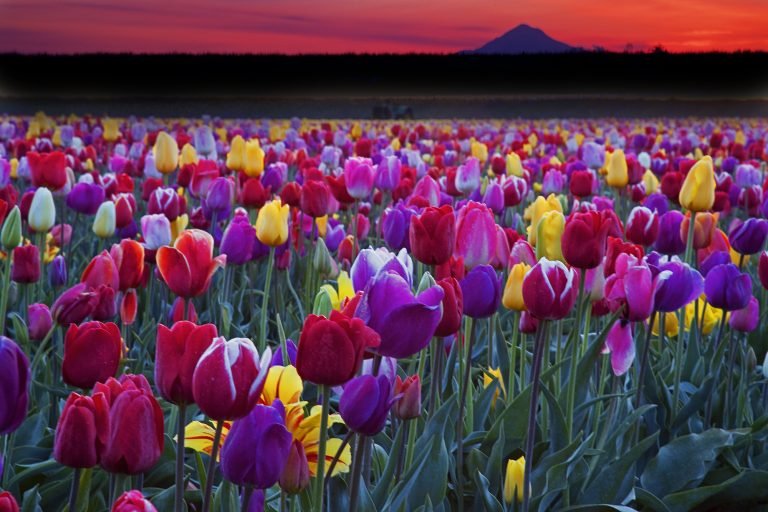
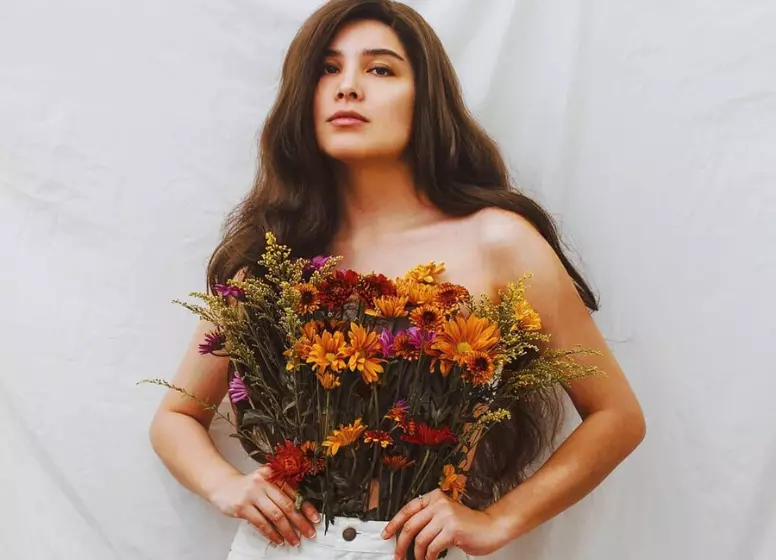
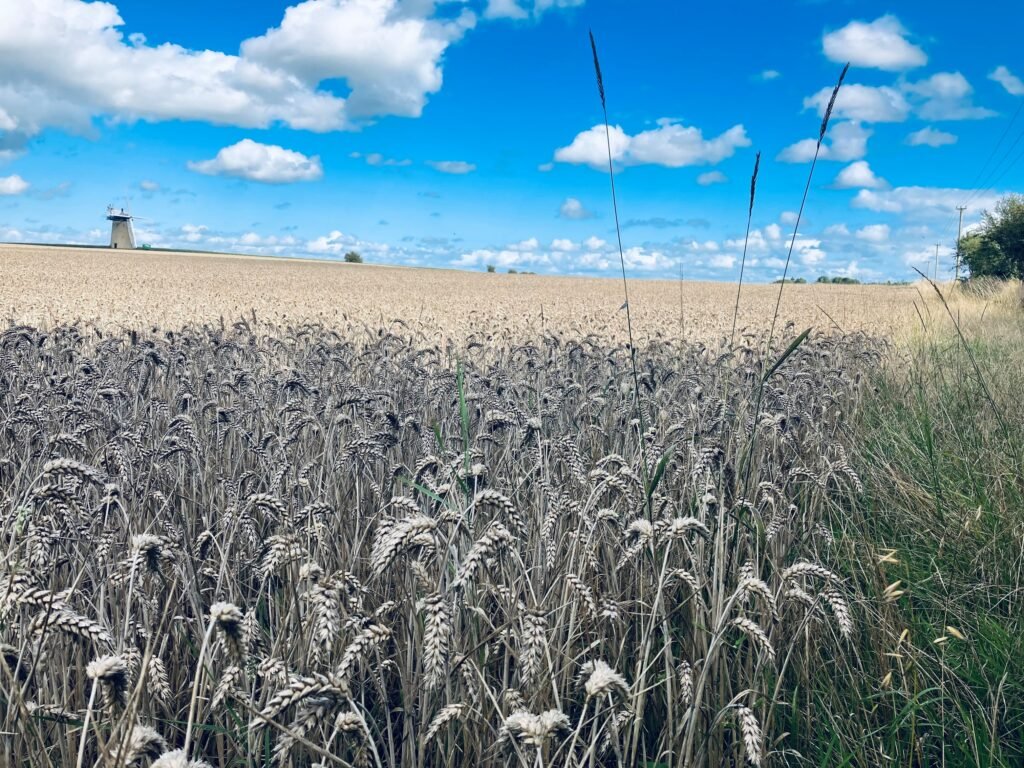
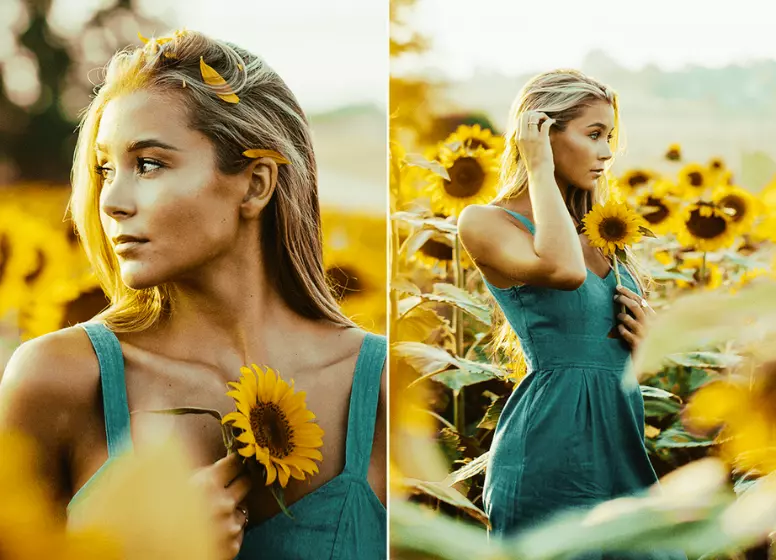
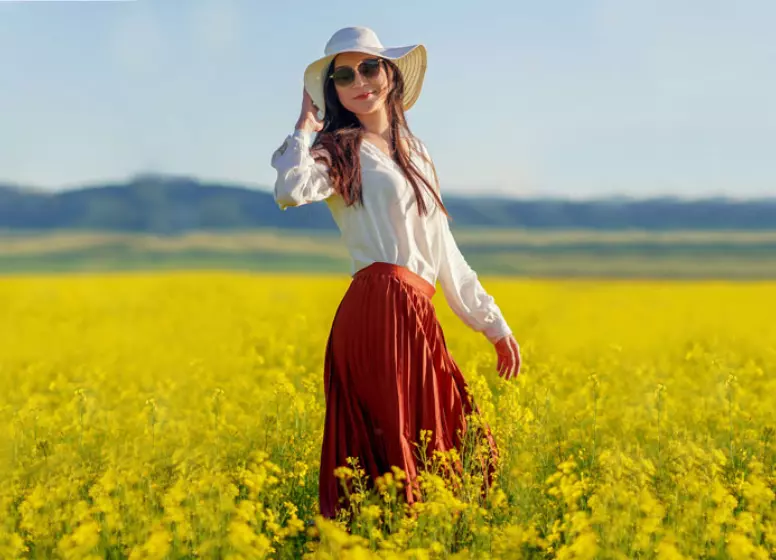
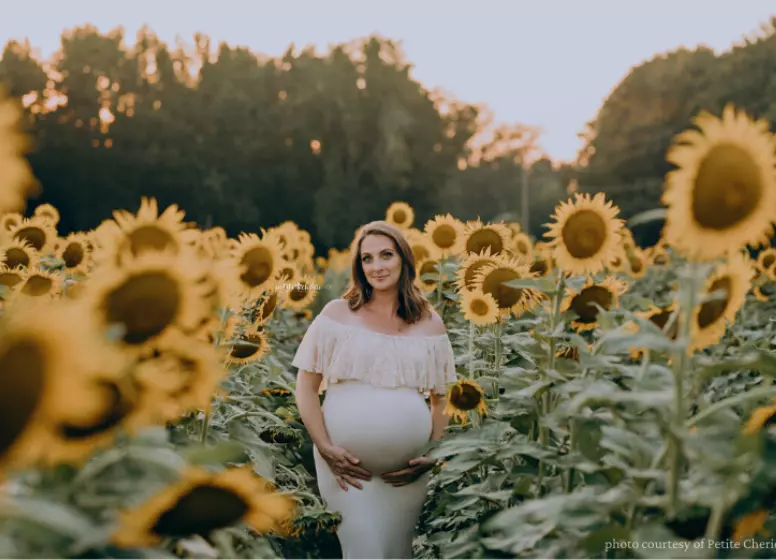

Comments are closed.